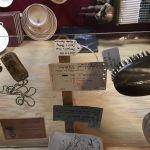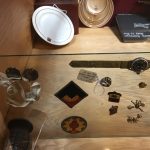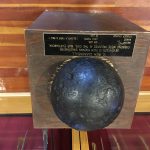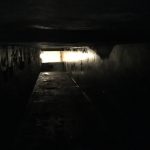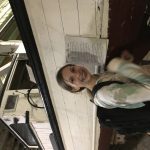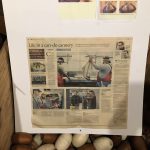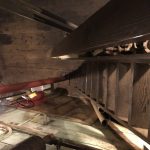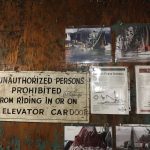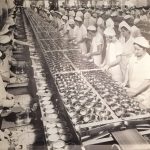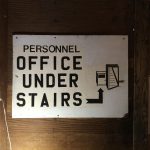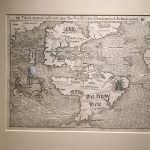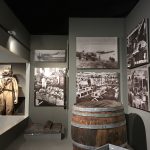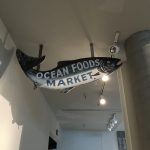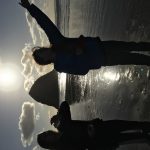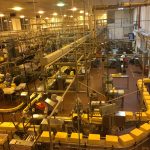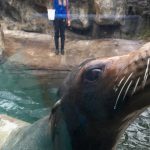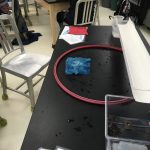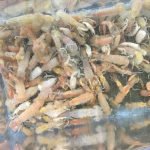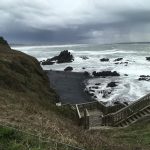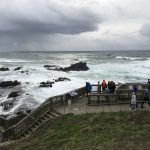So, this assignment was to write a summative post about everything we learned during our trip to Oregon. The assignment did not, however, include the format our post should be in. So, instead of writing paragraphs upon paragraphs explaining every little detail of our trip to Oregon, I will instead compile it into small sections of sentences, lists, photos, links, and projects, all of which I could have made into paragraphs but this way seemed like a better learning experience for me.
The point of this trip was to learn about advertising, marine biology, Oregon history, and to have a great time.
Sunday, November 20th, 8:30 AM – 12:00 PM
Fort Stevens State Park and Historic Site
What we learned:
- A gun battery is a set of two or more identical guns.
- The gun battery at fort stevens was a disappearing gun battery, meaning it would disappear behind the fort wall after being fired.
- Fort Stevens was a functioning military reservation from 1863-1947.
- Cannonballs and gunpowder would be stored under the guns and be brought up by military workers.
- The Fort that we saw was just a smaller portion of a whole military town resided in my military families during World War II.
We took a tour of the main fort base and saw all of the underground tunnels and rail systems.
Same Day, 2:00 PM – 3:00 PM
Astoria Column
What we learned:
- The Astoria Column was built in 1926.
- It was modeled after the Trajan Column in Rome.
- Wrapped around this structure is a hand painted piece of spiral art called a frieze.
- If unwound, the frieze would span over 500 feet, which is equivalent to over 150 meters.
- This frieze depicts the history of the pacific northwest.
- The column is 125 feet tall, or 38 meters.
We climbed the column to the top and I was absolutely terrified. I screamed all the way back down.
Same Day, 3:30 PM – 5:30 PM
Hanthorn Cannery Museum
What we learned:
- The Hawthorn Cannery Museum was a museum all about the Bumble Bee cannery.
- The cannery was important to the town of Astoria because it helped bring in jobs to the small town.
- The cannery helped put the town of Astoria on the map.
- They canned fish.
- The canned fish would then be imported to countries all over the world.
Personally, I think that Bumble Bee is a pretty bad name for a company selling seafood. I feel that it would get easily confused with canned bees.
Monday, November 21st, 9:30 AM – 11:30 AM
Columbia River Maritime Museum
What we learned:
- The Columbia River Maritime Museum was opened in 1963 in Astoria’s old City Hall.
- In 1982 it was moved to where it is now.
- It is the official Oregon state maritime museum.
- The museum is located about ten miles, or sixteen kilometers, from the mouth of the Columbia River.
- The museum is full of different exhibits about everything from crossing the river bar to the USS Shark Cannon.
- The coast guard station on the Columbia river is the largest in the pacific northwest and is used for training as it has waves of over 40 feet in height.
I had a good time here because we got to do fun activities related to the coast guard such as having to do a task after our hands had been submerged in ice water.
Same Day, 1:00 PM – 2:30 PM
Cannon Beach
What we learned:
- Haystack Rock is sometimes called the third largest intertidal rock in the world.
- Haystack Rock is almost 240 feet tall (72 meters).
- The sand is soft here.
“Take pride that even though the rest of the world may disagree, you still believe it to be a beautiful place.” -Kurt Vonnegut
Same Day, 4:00 PM – 5:30 PM
Tillamook Cheese Factory
What we learned:
- The land here was perfect to raise dairy cows.
- Dairy farmers decided it was easiest to get milk to factories in the center of old dirt roads to make it more accessible, which is why the Tillamook Cheese Factory was built here.
- Tillamook is the 48th largest dairy processor in North America.
- One of their most popular cheeses is the Tillamook Baby Loaf.
We got to taste cheese here. Also, when we visited the machine malfunctioned and we got to watch all the cheese pile up.
Tuesday, November 22nd, 10:00 AM – 11:30
Oregon Coast Aquarium
What we learned:
- Octopuses have blue blood pumped from three hearts.
- Otters tend to eat between 15% – 25% of their body fat every day.
- Touching tidepool animals such as sea stars or anemones with more than just your pinky finger can damage them.
- The Oregon Coast Aquarium was founded in 1992
My favourite part of the aquarium was watching the otters play in the pool.
Same Day, 2:00 PM – 6:00 PM
Hatfield Marine Science Center
What we learned:
- Male ghost shrimp have a larger claw on one side than the females.
- Shrimp live in connected burrows.
- The size of the crab we had didn’t affect the speed of the shrimp
- There are almost 7,000 types of crabs in the world.
The shrimp and crabs were a little bit creepy to me but I eventually got used to it.
Wednesday, November 23rd, 9:00 AM – 12:00 PM
Hatfield Marine Science Center (yes, again)
What we learned:
- We created underwater robots called ROVs.
- My group had the most success when we put three motors in different angles from each other.
- In the Visitor Center, there was a machine called the tsunami machine that created miniature tsunamis out of a pendulum rhythm.
- There was also a really neat sandbox that changed to a physical map when you moved the sand.
We competed with our robots to pick up marbles with magnets and my group’s robot won.
Same Day, 2:00 – 5:30
Yaquinna Head Outstanding Natural Area
What we learned:
- Cobbles are a non-renewable resource which are created over thousands of years.
- You couldn’t take any of the rocks home because it was government protected land.
- Never turn your back to the water because waves called sneaker waves could appear out of nowhere and knock you down.
It was so pretty here but it was quite windy. We also saw a couple seals which was neat!
Thursday, November 24th, 9:00 AM – 11:00 AM
South Beach State Park
What we learned:
- Water is wet.
- Water was here.
- Therefore, we were wet.
It rained a lot. There was lightning too.
That’s all the activities we did. Now onto the projects.
The first project we did was based around advertising. We had to create advertisements for different things related to Oregon. We created advertisements for 3 different things. First, we created one for a business, then one for a popular tourist destination, and finally one to spread awareness of tsunamis. For our business ad we had the opportunity to interview the owner of a small business. We were in small groups of about 5 or 6. My group was assigned to Nisa’s Thai Kitchen, a small family run restaurant in Warrenton, Oregon. For our next ad, we had to create advertisements for a lookout point above Cannon Beach. We took a whole lot of photos here and so it was quite simple to create the ad because I was prepared. The last advertisement we had to make was a tsunami warning advertisement. Mine didn’t turn out quite the way I would have liked, as it was quite difficult to find photo opportunities during our trip. What I think I would have done next time differently was to take more photos. In multiple instances, I ended up not having enough nice quality photos to create an ideal advertisements. I will place my advertisements below if you would like to see.
While we were in Oregon, we created a book of everything we did. Here it is if you’d like to see!
Overall, I had a great time in Oregon. Everything we did was a new adventure, and I made such great memories.


